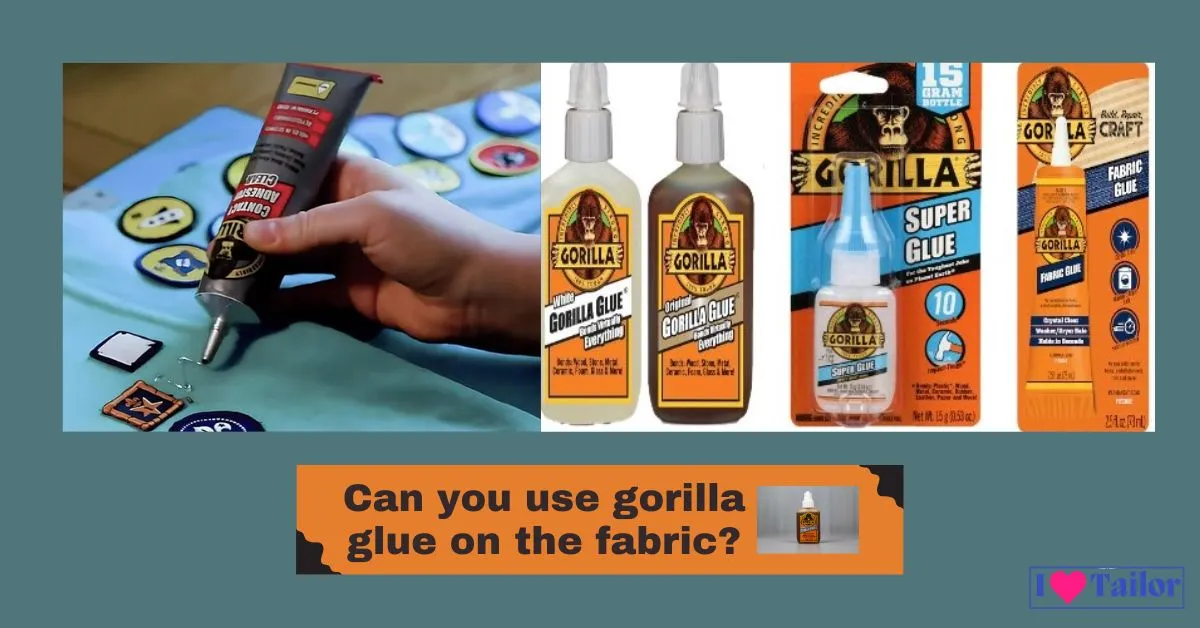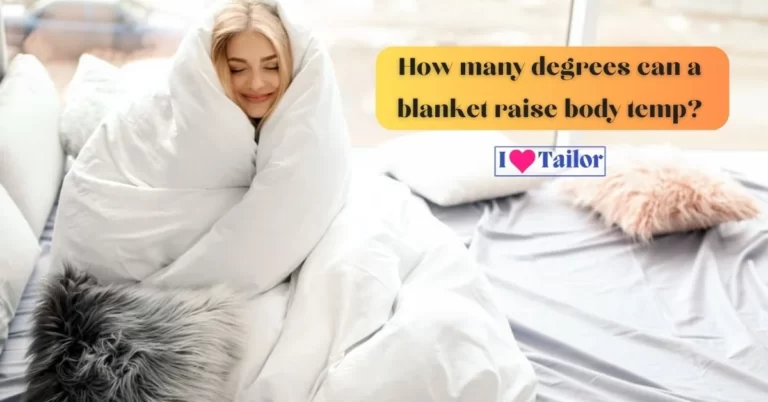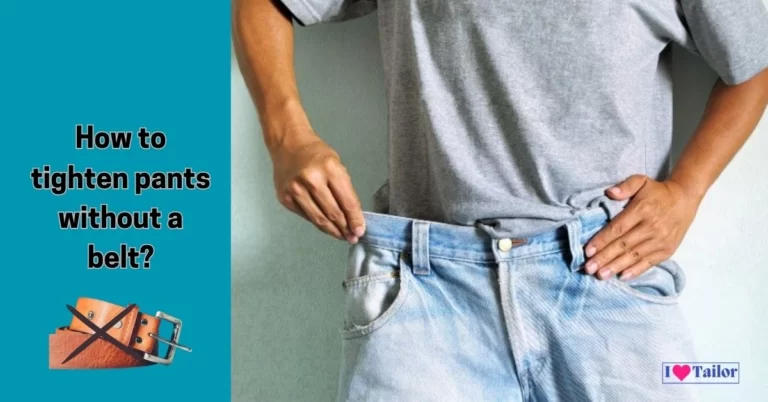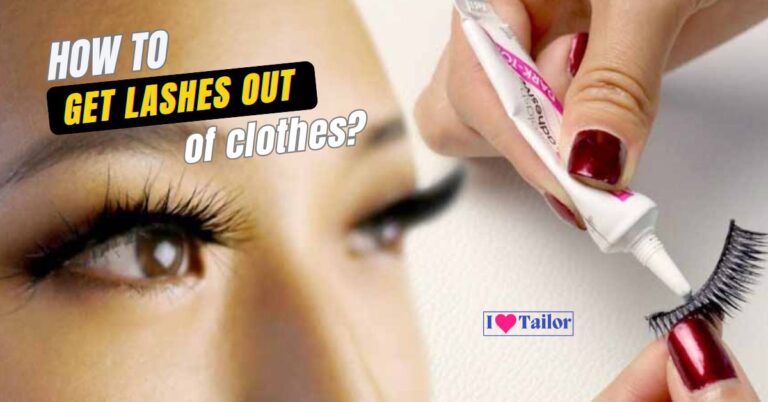Can you use Gorilla Glue on the Fabric?
From arts and crafts to quick DIY fixes, adhesives play a critical role in our daily lives. Among the many brands available on the market, Gorilla Glue has made a name for itself with its impressive bonding strength and versatility. Gorilla Glue is a name synonymous with superior bonding strength and versatility. From woodworking to ceramic repairs, this robust adhesive is a go-to solution for a plethora of DIY projects.
But when it comes to its compatibility with fabric, there are nuances to consider. This article, “Can you use Gorilla Glue on the Fabric?” Is set to explore the potential of using Gorilla Glue with fabric, shedding light on its efficacy, potential drawbacks, and alternatives within the Gorilla product line that might be a better fit for your fabric needs.
Related post: How to soften stiff, thick jeans?
What is gorilla glue?
A well-known brand of adhesive noted for its mighty bonding powers is Gorilla Glue. The original Gorilla Glue is a waterproof adhesive that is sometimes referred to as polyurethane adhesive. It is known to adhere to a wide range of surfaces, including wood, stone, metal, ceramic, foam, glass, and more.
The capacity of gorilla glue to extend up to three times into the material to create an extraordinarily strong connection is one of its primary features. The adhesive may be used both indoors and outdoors because of its temperature resistance.
A wide variety of adhesives, including super glue, construction adhesive, transparent glue, wood glue, and even glue particularly made for use with textiles, are available in Gorilla Glue’s extensive product range.
How does gorilla glue work?
Gorilla glue works through a chemical reaction. Moisture causes a reaction in the glue that causes it to expand and take the shape of a foam-like material when it comes into contact with the glue.
This expansion allows the glue to penetrate the materials it is applied to and fill their small pores, forming a strong and durable connection. It is known to adhere well to a variety of materials, including foam, metal, stone, and wood.
Features of gorilla glue
| Feature | Description |
| Strong Bonding | Gorilla Glue is known for its exceptional bonding strength, creating a strong and durable bond on various surfaces. |
| Versatility | It can bond to a wide range of materials, including wood, metal, ceramics, stone, foam, glass, and some plastics. |
| Waterproof | Gorilla Glue is resistant to water, making it suitable for both indoor and outdoor applications. |
| Temperature Resistance | It can withstand extreme temperatures, ensuring the bond remains intact under various environmental conditions. |
| Expansion during Curing | Gorilla Glue expands as it cures, allowing it to fill gaps and create a tight seal. |
| Solvent Resistant | Once cured, it is resistant to solvents, ensuring the bond remains strong even in the presence of chemicals. |
| Gap-Filling Properties | It has excellent gap-filling capabilities, making it useful for bonding uneven or irregular surfaces. |
| Long Shelf Life | Gorilla Glue has a long shelf life when stored correctly, allowing for extended usability. |
| Applicator Options | The glue is available in various applicator options, including bottles, tubes, and glue sticks. |
| Ease of Use | Gorilla Glue is easy to apply and work with, making it suitable for both professionals and DIY enthusiasts. |
Is gorilla glue safe to use on fabric?
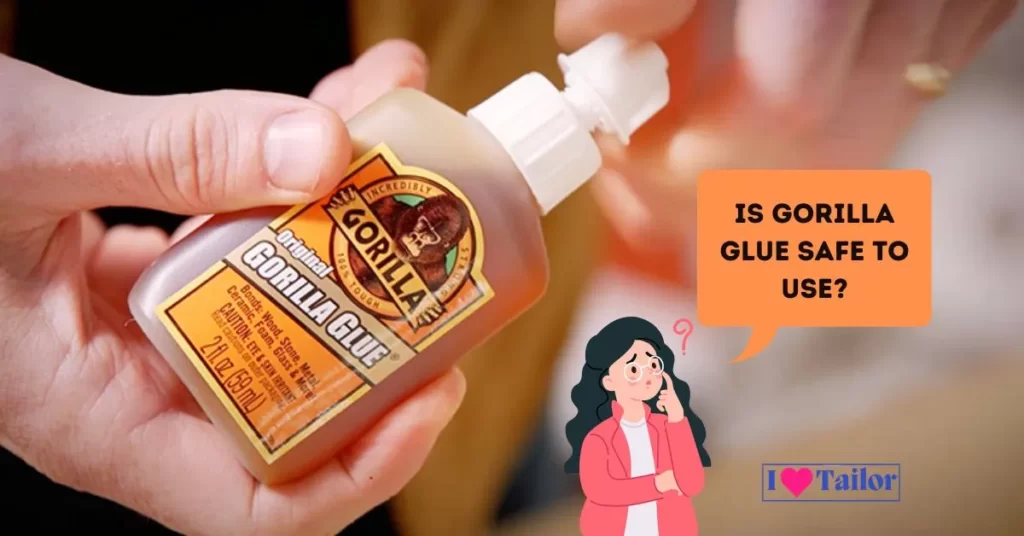
Yes, you can use Gorilla Glue on cloth, but there are a few things you should think about before. To get the finest effects, it’s crucial to understand the right application procedure. The steps are as follows:
Step 1: Preparation
Gather the essential supplies before you start: Gorilla Glue (choose the right Gorilla Glue product for fabric, such as Gorilla Fabric Glue), the fabric you want to bind, and any other equipment needed for your particular project.
Step 2: Prepare the Surface
Ensure that the fabric surface is clear of any dirt, dust, or debris and is dry and clean. Contaminants on the cloth have the potential to reduce the adhesive’s performance and weaken the connection.
Step 3: Test on a Small Area in
Make a brief test on a concealed or unnoticeable region of the cloth to establish compatibility and guard against any harm. Gorilla glue should be used sparingly and dried after application.
Examine the bond’s tensile strength and any unfavorable changes to the cloth, including stains or discoloration. It’s recommended to stop using Gorilla Glue on that specific cloth if the results are poor.
Step 4: Application
Apply a thin and even layer of Gorilla Glue to one of the fabric surfaces you wish to bond. Remember that a little goes a long way, so avoid using excessive amounts. If using Gorilla Fabric Glue, follow the specific instructions provided by the manufacturer.
Step 5: Bonding
After applying the adhesive, carefully press the two fabric surfaces together. Ensure even pressure is applied to create a strong and uniform bond. You may use clamps or heavy objects to hold the fabric in place while the glue cures.
Step 6: Drying and curing
Allow sufficient time for the gorilla glue to dry and cure. The curing time can vary depending on factors such as temperature and humidity. Refer to the product instructions for recommended curing times.
Step 7: Post-Bonding
Considerations Once the glue has fully cured, inspect the bond for strength and durability. Keep in mind that while gorilla glue is known for its strong bonding capabilities, it may result in a stiff or rigid area on the fabric.
This may not be suitable for certain applications, such as clothing items that require flexibility.
If gorilla glue is not recommended for fabric, why?
While gorilla glue can be used on fabric, there are some limitations to consider. Here’s why it may not be the best choice:
- Hardening Effect: Gorilla Glue has a tendency to harden when dry, which can create a stiff or rigid area on the fabric. This may not be ideal for fabrics that require flexibility.
- Staining: Gorilla glue can potentially stain or discolor fabrics, particularly lighter-colored materials. The amber color of the glue, when dry, can leave an unsightly blemish.
- Reversibility: Once gorilla glue has cured, it forms a strong and permanent bond. Reversing or removing the glue from the fabric can be challenging and may cause damage.
Tips and Tricks for the Effective Use of Gorilla Glue on Fabric
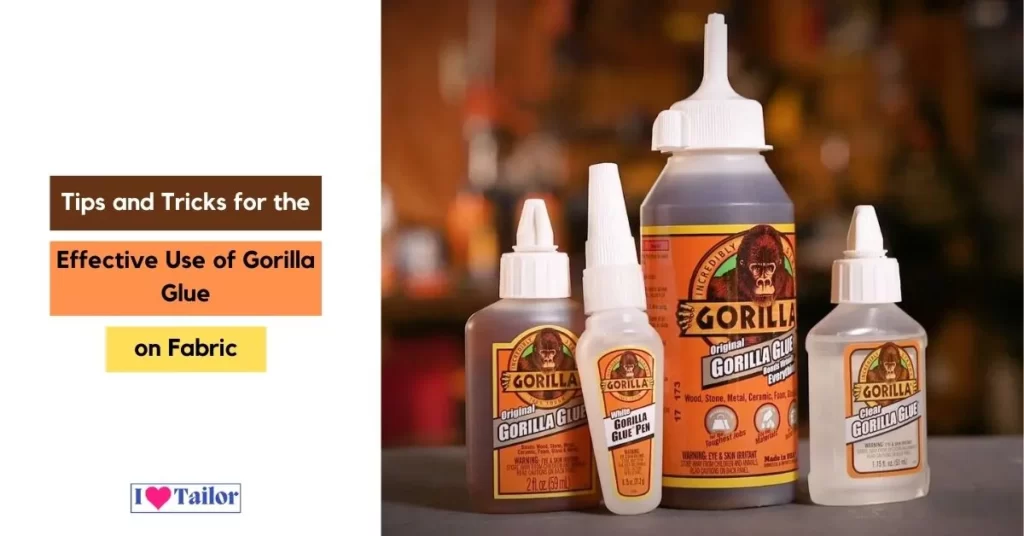
Using gorilla glue on fabric requires some know-how to ensure successful bonding without any unwanted side effects. Here are some valuable tips and tricks to make your experience with Gorilla Glue on fabric a smoother and more rewarding one:
- To prevent foaming, thin Gorilla Glue by adding a solvent like acetone or MEK.
- Boost the strength and heat resistance of solvent-based adhesives by mixing in about 10% gorilla glue.
- Create a protective brushable coating for fabrics by diluting Gorilla Glue with a suitable solvent.
- Plan the placement of embellishments carefully due to Gorilla Glue’s quick drying time.
- Before applying Gorilla Glue, wash the fabric to remove dirt and oils for better adhesion.
- Consider tumble drying to enhance the bond of patchwork or appliques secured with Gorilla Glue.
The best fabric glues
Here are four top glue options specifically designed for fabric:
Aleene’s Original Fabric Glue
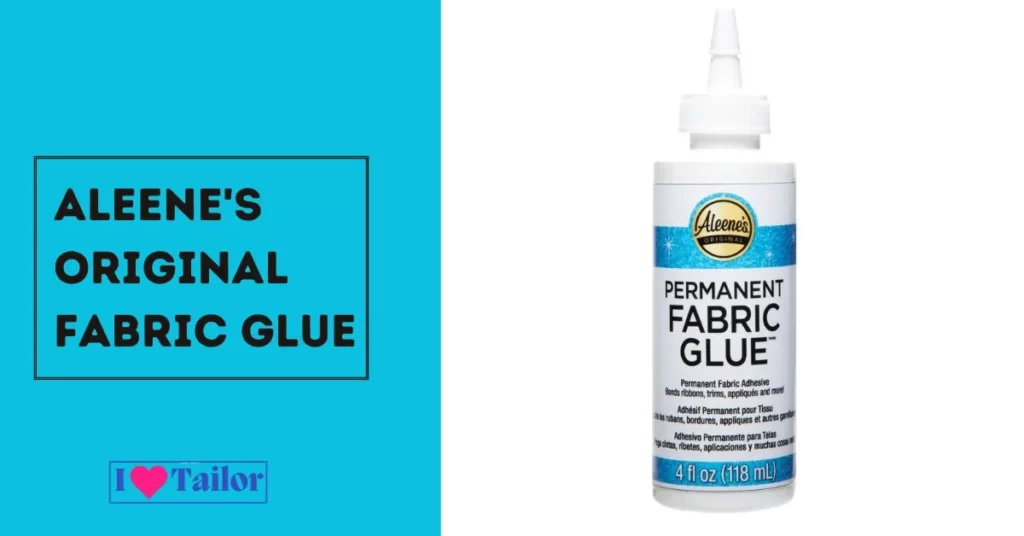
- Features: Aleene’s Original Fabric Glue is a trusted adhesive for fabric projects. It provides a strong bond while remaining flexible and washable.
- Benefits: This glue is perfect for both quick repairs and crafting. It dries clear, is non-toxic, and withstands repeated washings without compromising the bond.
- Ideal for: hemming, appliques, fabric embellishments, and general fabric bonding.
Dritz Unique Stitch Fabric Glue
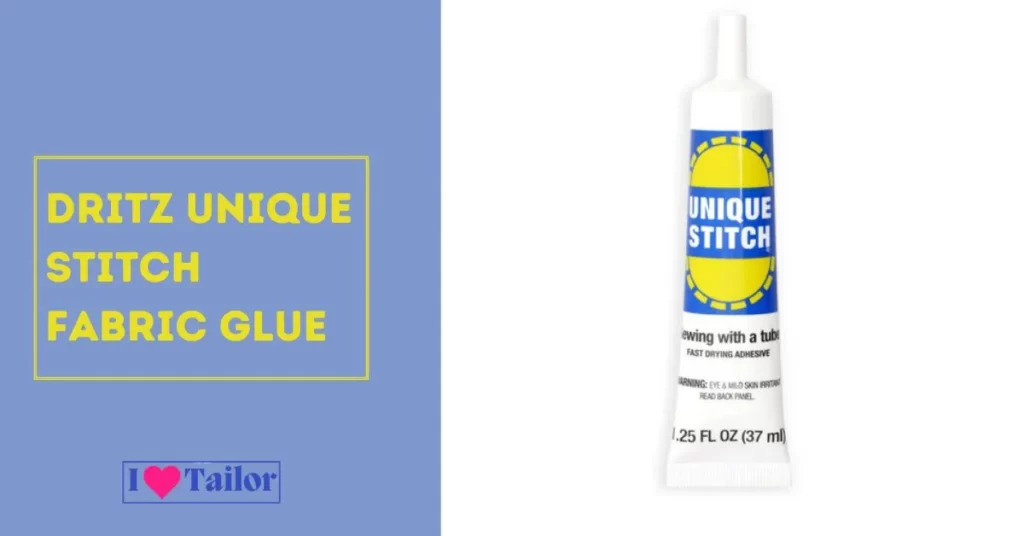
- Features: Dritz Unique Stitch Fabric Glue is a permanent adhesive specifically formulated for fabric. It provides a strong and durable bond.
- Benefits: This glue is excellent for a range of fabric materials and can be used on both natural and synthetic fabrics. It dries clear, remains flexible, and is machine washable.
- Ideal for: fixing seams, attaching patches, making fabric crafts, and mending clothing.
Beacon Fabri-Tac Permanent Adhesive
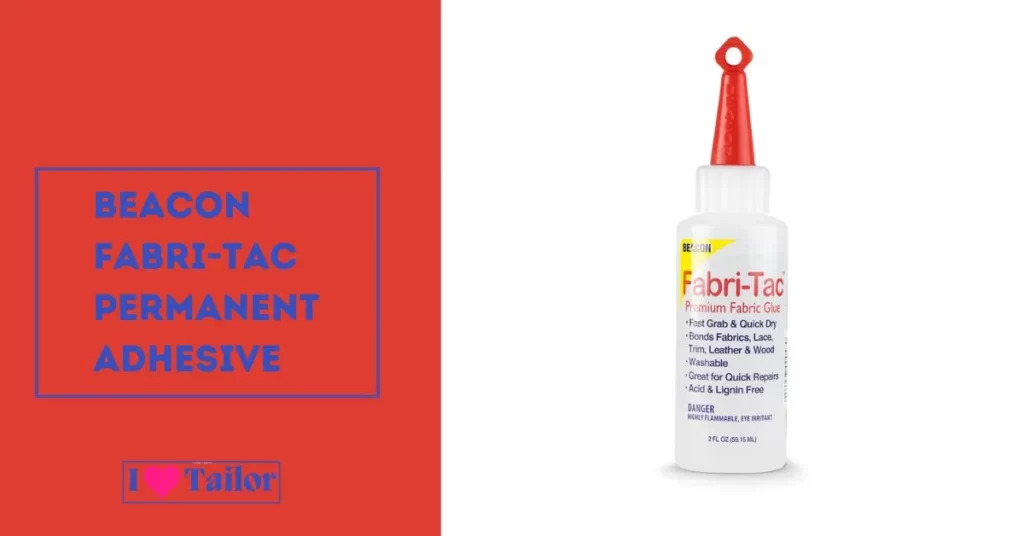
- Features: Beacon Fabri-Tac is a versatile adhesive that works well on fabric, leather, trims, and other materials. It provides a strong and permanent bond.
- Benefits: This glue is fast-drying, water-resistant, and machine-washable. It offers excellent adhesion and remains flexible after drying.
- Ideal for: fabric embellishments, attaching trims, upholstery projects, and general fabric bonding.
E6000 Craft Adhesive

- Features: E6000 Craft Adhesive is a multi-purpose adhesive suitable for various materials, including fabric. It provides a strong and flexible bond.
- Benefits: This glue is known for its industrial-strength bonding capabilities. It is also water-resistant, paintable, and remains flexible after curing.
- Ideal for: fabric-to-fabric bonding, jewelry-making, mixed-media projects, and other crafts involving fabric.
How can I remove gorilla glue from the fabric?
Removing gorilla glue from fabric can be challenging. Here are a few methods to try:
- Soaking in warm, soapy water: Gently soak the fabric in warm water with mild soap for some time. Then, attempt to peel or scrape off the softened glue.
- Using acetone: Test a small, inconspicuous area of the fabric first to ensure it doesn’t cause any damage. Apply a small amount of acetone to a clean cloth and gently dab at the glue until it starts to loosen. Be cautious not to rub too hard or for too long to avoid damaging the fabric.
- Freezing and scraping: If the glue has fully dried, place the fabric in a freezer for a couple of hours. Once the glue hardens, carefully scrape it off with a blunt edge, such as a spoon or a butter knife.
Also read: How to get Vicks out of clothes?
FAQs
Can gorilla glue be used on all types of fabric?
No, gorilla glue is not recommended for all fabric types due to potential bonding issues.
Will gorilla glue damage or stain fabric?
Gorilla glue can leave residue or stains on fabric, which may be challenging to remove.
Can I wash fabric glued with gorilla glue?
Gorilla glue may not withstand repeated washing or exposure to water.
How long does gorilla glue last on fabric?
The longevity of Gorilla Glue on fabric varies depending on factors like fabric type and environmental conditions.
Is gorilla glue the strongest option for fabric adhesion?
Other options like fabric glues, fusible web, and sewing and stitching techniques are often stronger for fabric adhesion.
Conclusion: Can you use Gorilla Glue on the Fabric?
Indeed, Gorilla Glue can be a powerful ally for fabric-based projects thanks to its durability, water resistance, and versatility. Considerations like potential staining, difficulty in removal, and safety concerns need careful attention. The key to successfully using Gorilla Glue on fabric lies in understanding your specific project’s requirements and weighing the glue’s pros and cons. While Gorilla Glue applies to fabric, its suitability will depend on the specific needs of your task.
Thanks!

